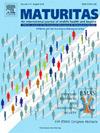女性膀胱过度活动综合征的特征:来自15年大型回顾性队列的结果。
IF 3.6
2区 医学
Q2 GERIATRICS & GERONTOLOGY
引用次数: 0
摘要
目的:本研究分析了患有膀胱过度活动综合征或混合性尿失禁的女性亚组,以评估治疗成功率、成功时间、治疗依从性以及人口统计学和临床特征。研究设计:本回顾性队列研究纳入1688例诊断为膀胱过动症或混合性尿失禁的女性患者。使用描述性统计和Kaplan-Meier生存分析分析患者人口统计学、临床特征、治疗方式和结局的数据。主要结果测量:治疗成功水平分为无成功、部分成功和完全成功。使用Kaplan-Meier曲线评估成功时间。评估影响结果的人口学和临床特征。结果:混合性尿失禁患者比孤立性膀胱过动症患者更年轻,体重指数(BMI)更高,合并症更多,症状更严重。膀胱过度活动的患者多发生在绝经后,早期治疗成功率较高。大多数患者在早期就得到了改善,尽管有些患者需要长期随访。亚组间治疗利用和治疗结果有显著差异。多药、肥胖、夜尿和混合性尿失禁的诊断与较低的成功率相关。局部雌激素,膀胱过度活动亚型和较少的药物预测更好的结果和早期反应。结论:根据患者人口特征和治疗史量身定制的个性化治疗策略对于有效治疗膀胱过度活动和混合性尿失禁至关重要。研究结果强调了长期坚持治疗的重要性,并强调了改进治疗干预以优化患者预后的领域。本文章由计算机程序翻译,如有差异,请以英文原文为准。
Characteristics of female overactive bladder syndrome: Results from a large retrospective cohort spanning 15 years
Objectives
This study analyzed subgroups of women with overactive bladder syndrome or mixed urinary incontinence to assess treatment success, time to success, therapy adherence, and demographic and clinical characteristics.
Study design
This retrospective cohort study was conducted with 1688 female patients diagnosed with overactive bladder or mixed incontinence. Data on patient demographics, clinical characteristics, treatment modalities, and outcomes were analyzed using descriptive statistics and Kaplan-Meier survival analysis.
Main outcome measures
Treatment success levels were categorized into no success, partial success, and complete success. Time to success was assessed using Kaplan-Meier curves. Demographic and clinical characteristics influencing outcomes were evaluated.
Results
Patients with mixed incontinence were younger, had a higher body mass index (BMI), had more comorbidities, and had more severe symptoms than those with isolated overactive bladder. Patients with overactive bladder were more often postmenopausal and had better early treatment success. Most patients improved early, though some required long-term follow-up. Significant differences in treatment utilization and outcomes were observed between subgroups. Polypharmacy, obesity, nocturia, and a diagnosis of mixed incontinence were associated with lower rates of success. Local estrogen, subtype of overactive bladder, and fewer medications predicted better outcomes and earlier response.
Conclusions
Personalized treatment strategies tailored to patient demographics and treatment history are crucial in managing overactive bladder and mixed incontinence effectively. The findings underscore the importance of long-term adherence to therapy and highlight areas for refining therapeutic interventions to optimize patient outcomes.
求助全文
通过发布文献求助,成功后即可免费获取论文全文。
去求助
来源期刊

Maturitas
医学-妇产科学
CiteScore
9.10
自引率
2.00%
发文量
142
审稿时长
40 days
期刊介绍:
Maturitas is an international multidisciplinary peer reviewed scientific journal of midlife health and beyond publishing original research, reviews, consensus statements and guidelines, and mini-reviews. The journal provides a forum for all aspects of postreproductive health in both genders ranging from basic science to health and social care.
Topic areas include:• Aging• Alternative and Complementary medicines• Arthritis and Bone Health• Cancer• Cardiovascular Health• Cognitive and Physical Functioning• Epidemiology, health and social care• Gynecology/ Reproductive Endocrinology• Nutrition/ Obesity Diabetes/ Metabolic Syndrome• Menopause, Ovarian Aging• Mental Health• Pharmacology• Sexuality• Quality of Life
 求助内容:
求助内容: 应助结果提醒方式:
应助结果提醒方式:


